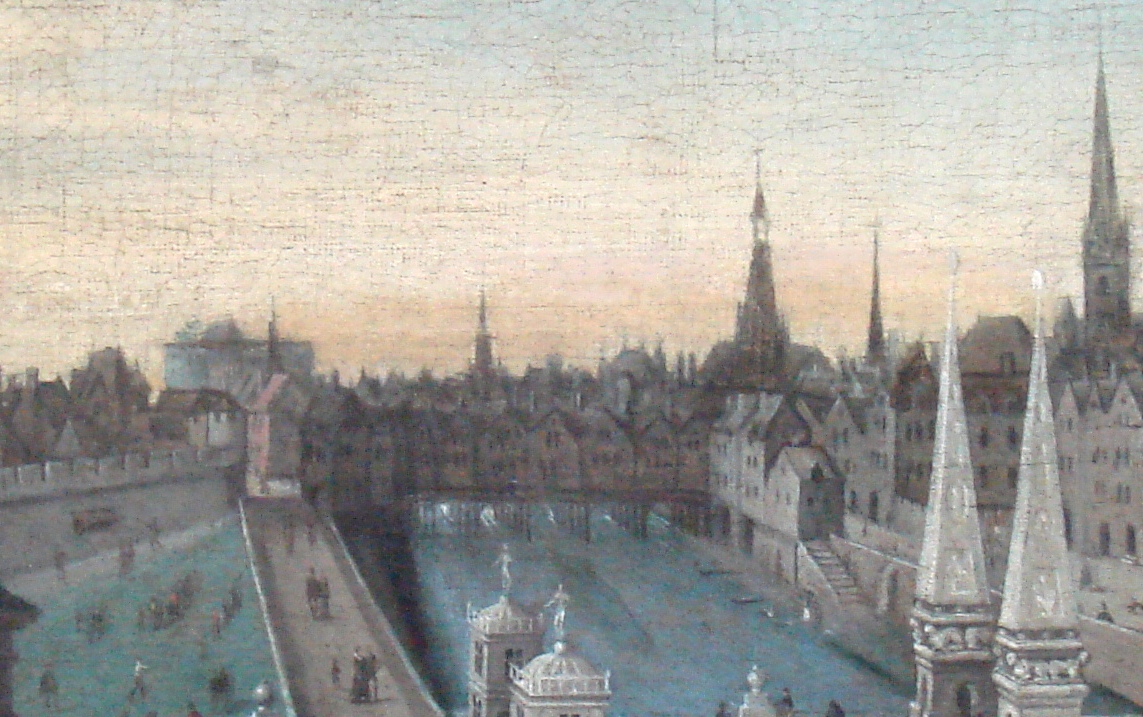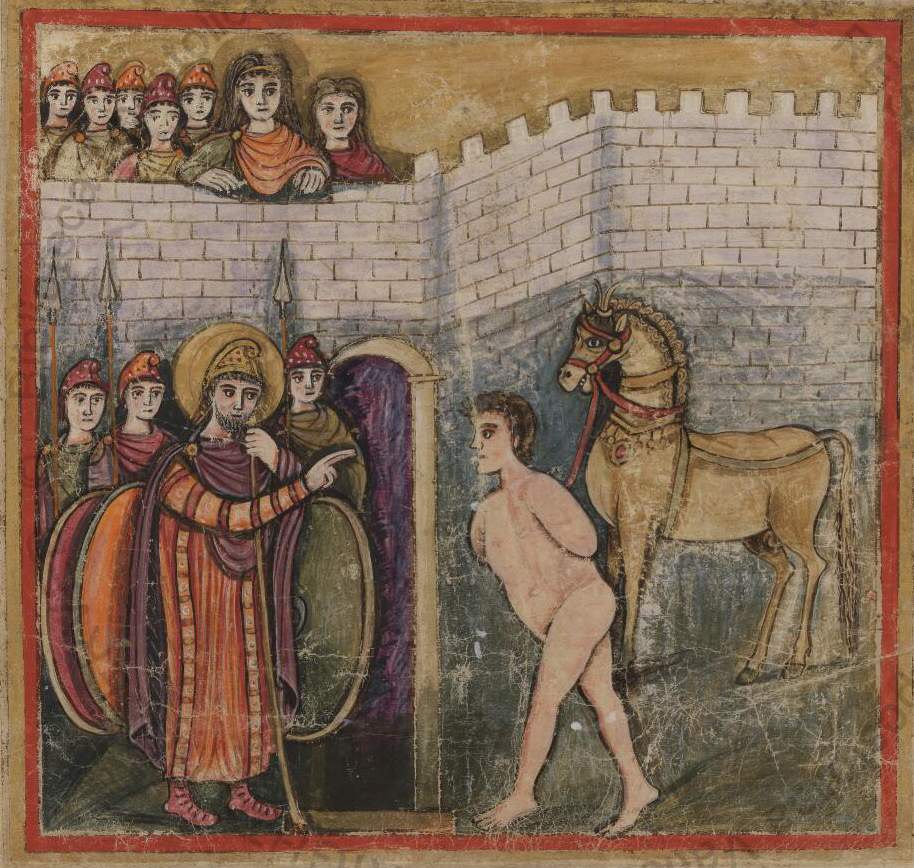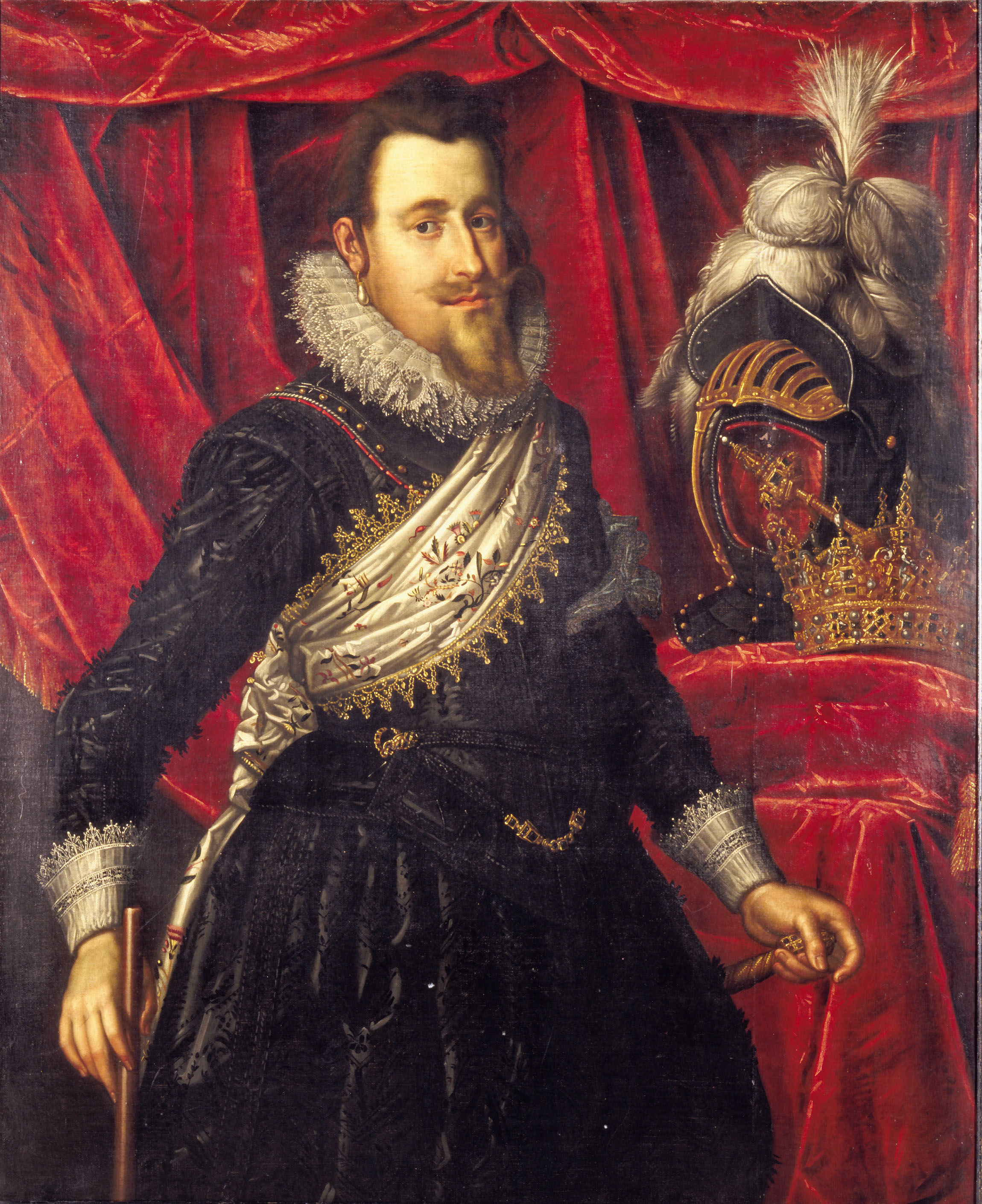|
Pont Saint-Michel
Pont Saint-Michel is a bridge linking the Place Saint-Michel on the Rive Gauche, left bank of the river Seine River, Seine to the Île de la Cité. It was named after the nearby chapel of Saint-Michel. It is near Sainte Chapelle and the Palais de Justice, Paris, Palais de Justice. The present 62-metre-long bridge dates to 1857. History First constructed in 1378, it has been rebuilt several times, most recently in 1857. The medieval bridge The construction of a stone bridge was decided upon in 1378 by the Parlement de Paris after an accord with the chapter of the cathedral of Notre-Dame de Paris, the Provost (civil)#France, provost of Paris, and the city's merchants. A location downstream of Petit-Pont was chosen, on the line of Rue Saint-Denis (Paris), Rue Saint-Denis, from the Grand-Pont on the Rive Droite, right bank and of Rue de la Harpe on the Rive Gauche, left bank. This allowed for a direct route across Île de la Cité. The provost, Hugues Aubriot, was charged with ... [...More Info...] [...Related Items...] OR: [Wikipedia] [Google] [Baidu] |
River Seine
) , mouth_location = Le Havre/Honfleur , mouth_coordinates = , mouth_elevation = , progression = , river_system = Seine basin , basin_size = , tributaries_left = Yonne, Loing, Eure, Risle , tributaries_right = Ource, Aube, Marne, Oise, Epte The Seine ( , ) is a river in northern France. Its drainage basin is in the Paris Basin (a geological relative lowland) covering most of northern France. It rises at Source-Seine, northwest of Dijon in northeastern France in the Langres plateau, flowing through Paris and into the English Channel at Le Havre (and Honfleur on the left bank). It is navigable by ocean-going vessels as far as Rouen, from the sea. Over 60 percent of its length, as far as Burgundy, is negotiable by large barges and most tour boats, and nearly its whole length is available for recreational boating; excursion boats offer sightseeing tours of the river banks in the capital city, Paris. There are 37 bridges in Par ... [...More Info...] [...Related Items...] OR: [Wikipedia] [Google] [Baidu] |
Provost (civil)
Provost is a title held by the civic heads of local governments in Scotland. It is similar in use to the title of mayor in other parts of the English-speaking world. In the 32 current unitary councils in Scotland, the title is often used for the convenor or civic head of a council, elected by its members to chair meetings and to represent the council. While convenor and depute convenor are the titles used in statute for this position, councils are generally permitted to choose their own titles for their civic heads. However, in the cities of Aberdeen, Dundee, Edinburgh and Glasgow, the title is specified in law as Lord Provost, who also performs the role of lord-lieutenant for the area. The title of provost is derived from the French term ''prévôt'', which has origins in the Roman Empire. In the past, it was associated with the principal magistrates of Scotland's burghs, but it has since been used in a range of local authorities and community councils, as well as former d ... [...More Info...] [...Related Items...] OR: [Wikipedia] [Google] [Baidu] |
Pont Marie
The Pont Marie is a bridge which crosses the Seine in Paris, France. The bridge links the Île Saint-Louis to the quai de l'Hôtel de Ville and is one of three bridges designed to allow traffic flow between the Île Saint-Louis and the Left and Right banks of Paris. The Pont Marie links the Right Bank and is the counterpart of the Pont de la Tournelle which is built along the same line but serves to connect the Île Saint-Louis with the Left Bank. History The Pont Marie derives its name from the engineer Christophe Marie, who proposed its construction beginning in 1605 in order to augment and assist in the urbanisation of the île Saint-Louis. However the bridge was not actually approved for building by the king until 1614, at which point Louis XIII laid the first stone as part of a formal bridge building ceremony. Following approval, the Pont Marie's construction was spread out over 20 years, from 1614 to 1635. Thus, the bridge is one of the oldest bridges in Paris. In 1 ... [...More Info...] [...Related Items...] OR: [Wikipedia] [Google] [Baidu] |
Wattle And Daub
Wattle and daub is a composite building method used for making walls and buildings, in which a woven lattice of wooden strips called wattle is daubed with a sticky material usually made of some combination of wet soil, clay, sand, animal dung and straw. Wattle and daub has been used for at least 6,000 years and is still an important construction method in many parts of the world. Many historic buildings include wattle and daub construction. History The wattle and daub technique was used already in the Neolithic period. It was common for houses of Linear pottery and Rössen cultures of middle Europe, but is also found in Western Asia (Çatalhöyük, Shillourokambos) as well as in North America (Mississippian culture) and South America (Brazil). In Africa it is common in the architecture of traditional houses such as those of the Ashanti people. Its usage dates back at least 6,000 years. There are suggestions that construction techniques such as lath and plaster and even cob ... [...More Info...] [...Related Items...] OR: [Wikipedia] [Google] [Baidu] |
Jean Fouquet
Jean (or Jehan) Fouquet (ca.1420–1481) was a French painter and miniaturist. A master of panel painting and manuscript illumination, and the apparent inventor of the portrait miniature, he is considered one of the most important painters from the period between the late Gothic and early Renaissance. He was the first French artist to travel to Italy and experience first-hand the early Italian Renaissance. Little is known of Fouquet's early life and education. Though long assumed to have been an apprentice of the so-called Bedford Master of Paris it is now suggested that he may have studied under the Jouvenal Master in Nantes, whose works were formerly assumed to be early works by Fouquet. Sometime between 1445 and 1447 he travelled to Italy where he came under the influence of Roman Quattrocento artists such as Fra Angelico and Filarete. During the 1450s he began working at the French court, where he counted kings Charles VII and his successor Louis XI among his many patrons. ... [...More Info...] [...Related Items...] OR: [Wikipedia] [Google] [Baidu] |
Hours Of Étienne Chevalier
The Hours of Étienne Chevalier is an illuminated book of hours commissioned by Étienne Chevalier, treasurer to king Charles VII of France, from the miniature painter and illuminator Jean Fouquet. Only 48 of its leaves with 47 miniatures survive, dispersed across seven collections in Europe and the United States of America, of which 40 illuminations are held at the Musée Condé in Château de Chantilly in France. History It was probably commissioned by Chevalier for his personal use around 1452, just after he was made treasurer of France by Charles VII of France and just after the death of his wife, who does not appear in any of the illuminations with him. He was definitely the commissioner of the work, since his portrait appears frequently in it, as do his full name "Maistre Estienne Chevalier" (notably in the border of the image of ''The Presentation of the Virgin'') and his cypher "EE" in several of the miniatures. It was probably completed around 1460 – François Avril a ... [...More Info...] [...Related Items...] OR: [Wikipedia] [Google] [Baidu] |
Miniature (illuminated Manuscript)
A miniature (from the Latin verb ''miniare'', "to colour with ''minium''", a red lead) is a small illustration used to decorate an ancient or medieval illuminated manuscript; the simple illustrations of the early codices having been miniated or delineated with that pigment. The generally small scale of such medieval pictures has led to etymological confusion with minuteness and to its application to small paintings, especially portrait miniatures, which did however grow from the same tradition and at least initially used similar techniques. Apart from the Western, Byzantine and Armenian traditions, there is another group of Asian traditions, which is generally more illustrative in nature, and from origins in manuscript book decoration also developed into single-sheet small paintings to be kept in albums, which are also called miniatures, as the Western equivalents in watercolor and other mediums are not. These include Arabic miniatures, and their Persian, Mughal, Ottoman and ... [...More Info...] [...Related Items...] OR: [Wikipedia] [Google] [Baidu] |
1577 Pont Saint Michel
__NOTOC__ Year 1577 ( MDLXXVII) was a common year starting on Tuesday (link will display the full calendar) of the Julian calendar. Events January–June * January 9 – The second Union of Brussels is formed, first without the Protestant counties of Holland and Zeeland (which is accepted by King Philip II of Spain), later with the Protestants, which means open rebellion of the whole of the Netherlands. * March 17 – The Cathay Company is formed, to send Martin Frobisher back to the New World for more gold. * May 28 – The ''Bergen Book'', better known as the ''Solid Declaration'' of the Formula of Concord, one of the Lutheran confessional writings, is published. The earlier version, known as the ''Torgau Book'' ( 1576), had been condensed into an ''Epitome''; both documents are part of the 1580 ''Book of Concord''. July–December * July 9 – Ludvig Munk is appointed Governor-General of Norway. * September 17 – The Treaty of Berger ... [...More Info...] [...Related Items...] OR: [Wikipedia] [Google] [Baidu] |
Hundred Years' War
The Hundred Years' War (; 1337–1453) was a series of armed conflicts between the kingdoms of Kingdom of England, England and Kingdom of France, France during the Late Middle Ages. It originated from disputed claims to the French Crown, French throne between the English House of Plantagenet and the French royal House of Valois. Over time, the war grew into a broader power struggle involving factions from across Western Europe, fuelled by emerging nationalism on both sides. The Hundred Years' War was one of the most significant conflicts of the Middle Ages. For 116 years, interrupted by several Ceasefire, truces, five generations of kings from two rival Dynasty, dynasties fought for the throne of the dominant kingdom in Western Europe. The war's effect on European history was lasting. Both sides produced innovations in military technology and tactics, including professional standing armies and artillery, that permanently changed warfare in Europe; chivalry, which had reac ... [...More Info...] [...Related Items...] OR: [Wikipedia] [Google] [Baidu] |
Pont-Neuf
The Pont Neuf (, "New Bridge") is the oldest standing List of crossings of the River Seine, bridge across the river Seine in Paris, France. It stands by the western (downstream) point of the Île de la Cité, the island in the middle of the river that was, between 250 and 225 BC, the birthplace of Paris, then known as Lutetia and, during the History of Paris, medieval period, the heart of the city. The bridge is composed of two separate spans, one of five arches joining the left bank to the ''Île de la Cité'', another of seven joining the island to the right bank. Old engraved maps of Paris show that the newly built bridge just grazed the downstream tip of the ''Île de la Cité''; since then, the natural sandbar building of a Ait, mid-river island, aided by stone-faced embankments called ''quais'', has extended the island. Today the tip of the island is the location of the ''Square du Vert-Galant'', a small public park named in honour of Henry IV of France, Henry IV, nicknam ... [...More Info...] [...Related Items...] OR: [Wikipedia] [Google] [Baidu] |




.jpg)




